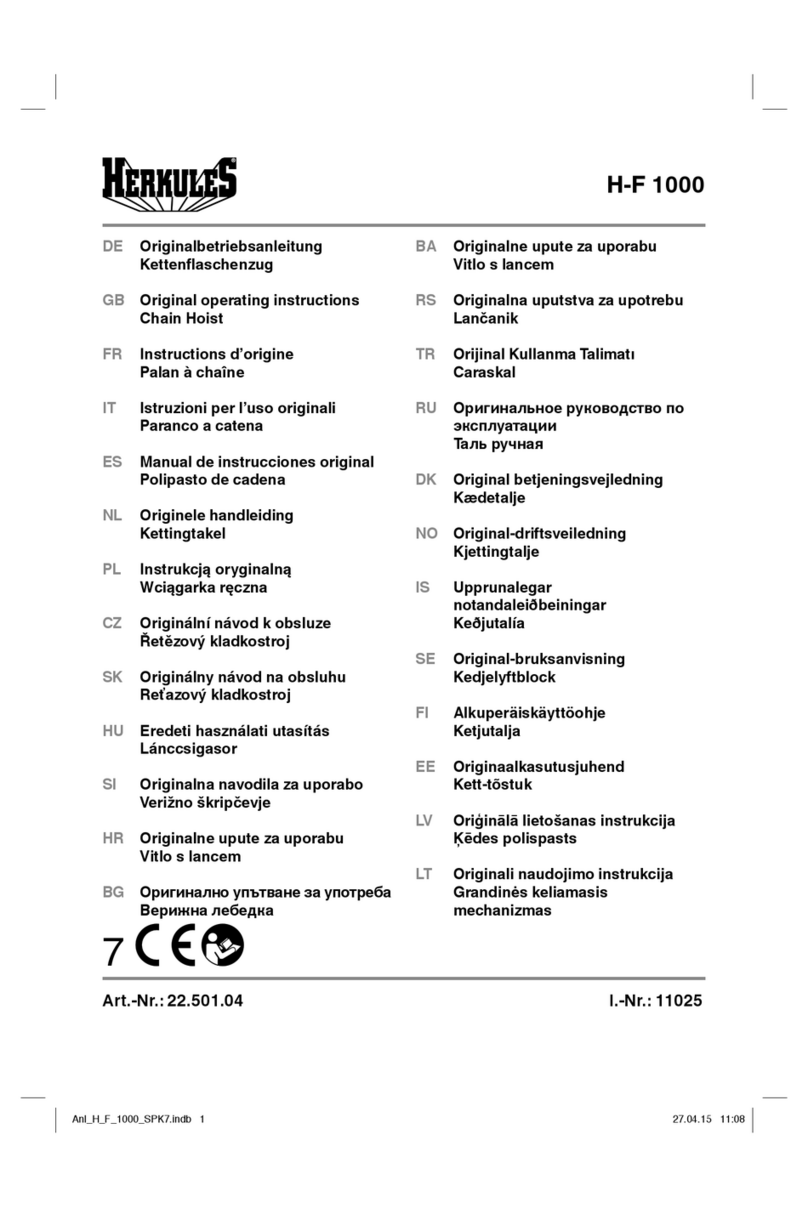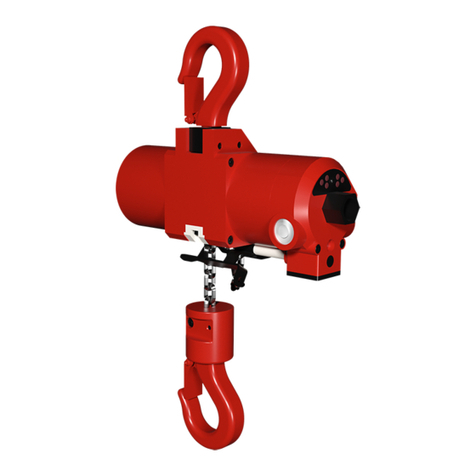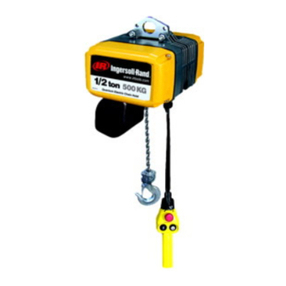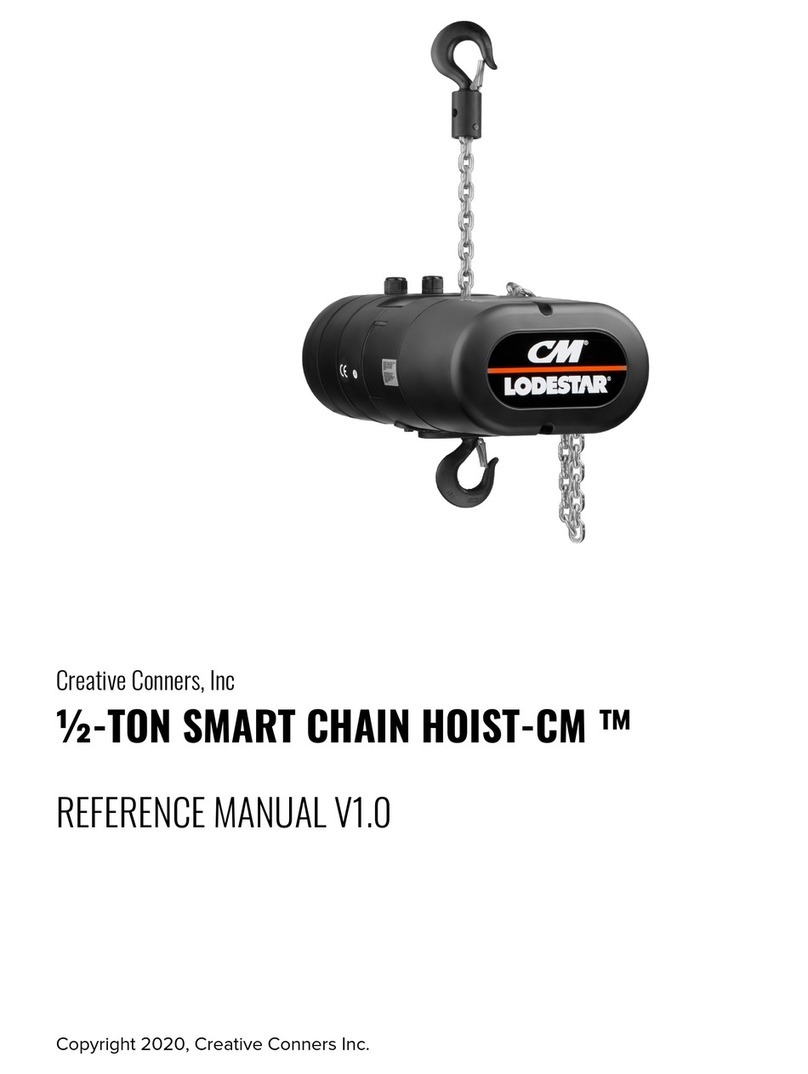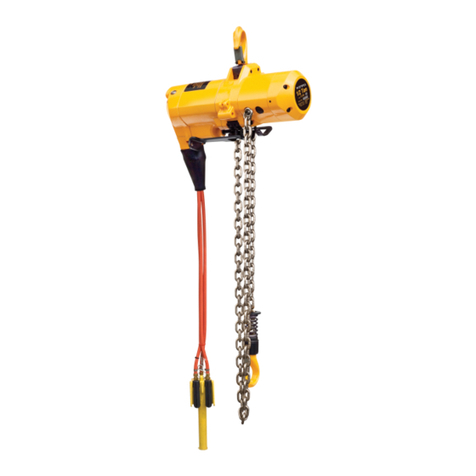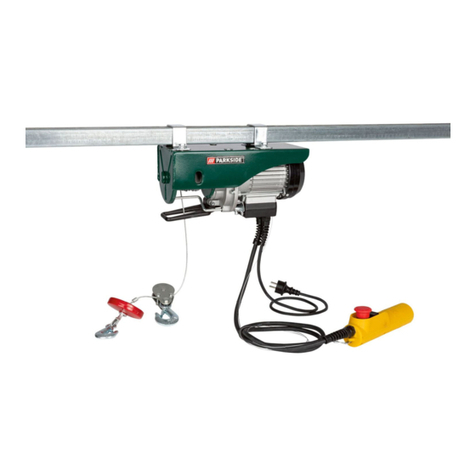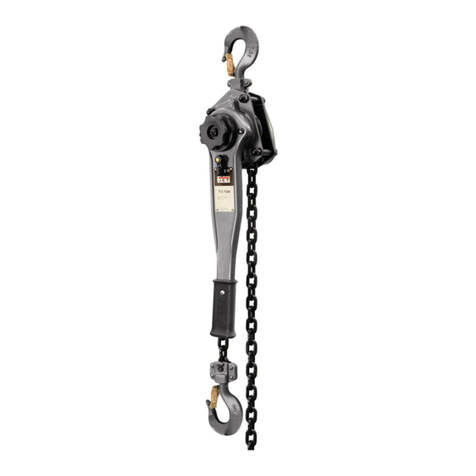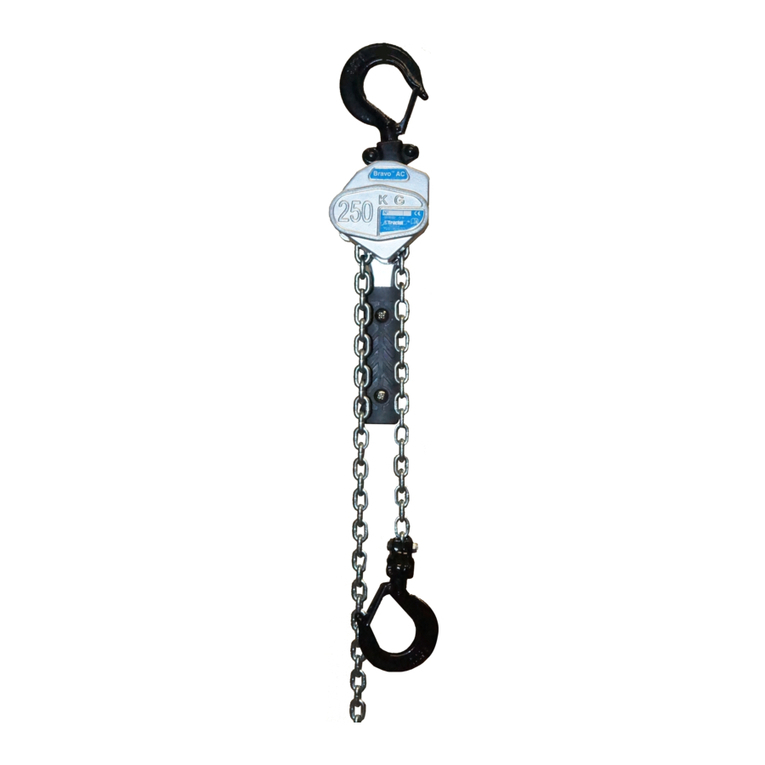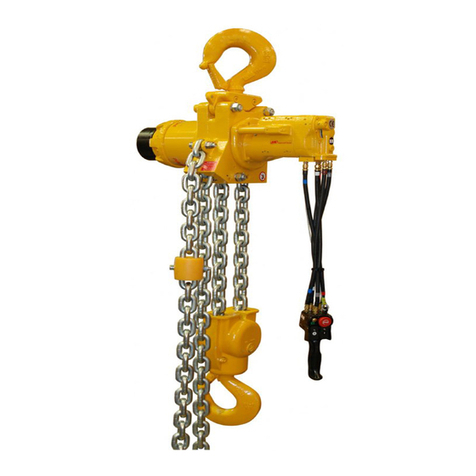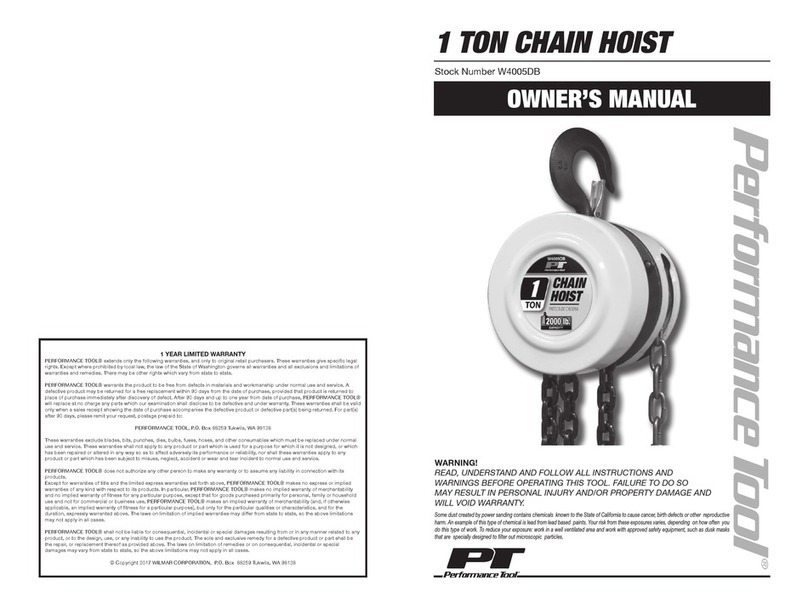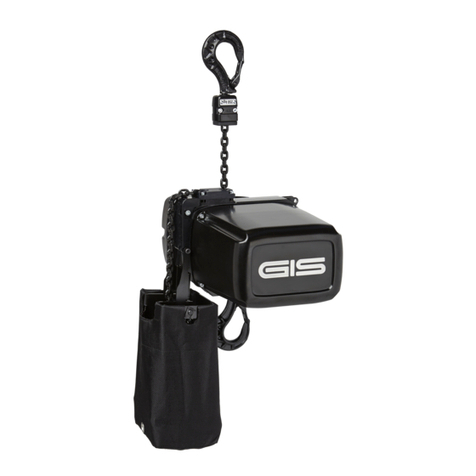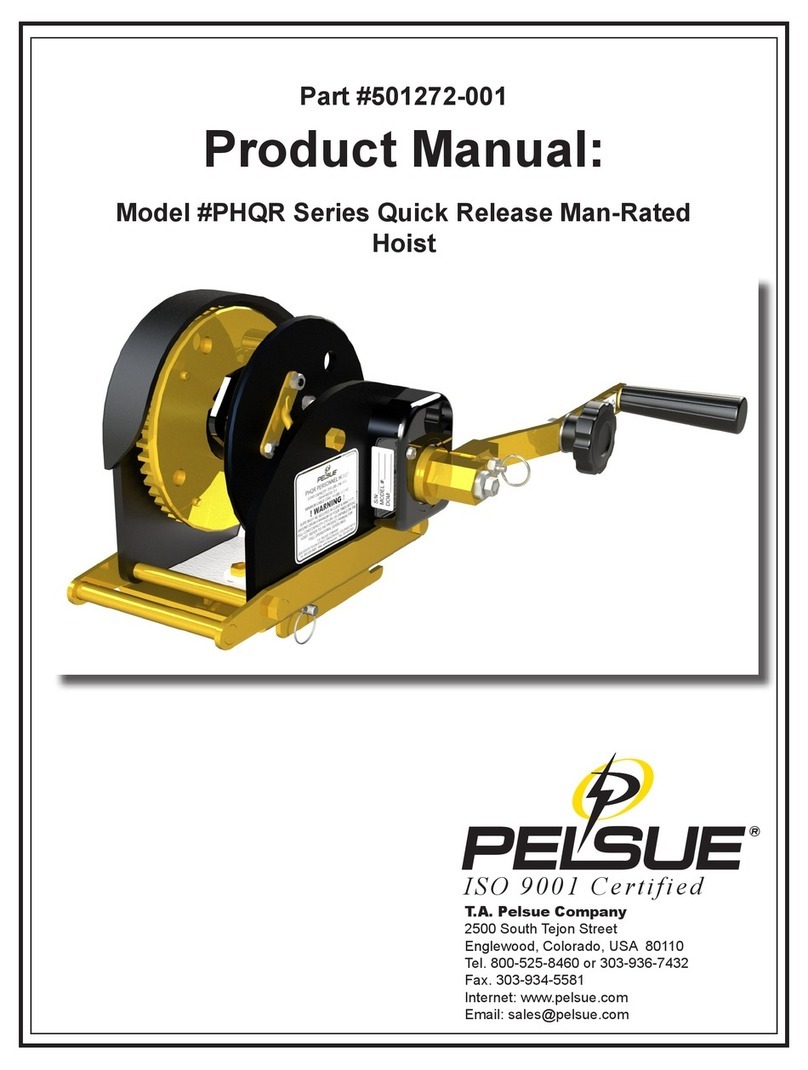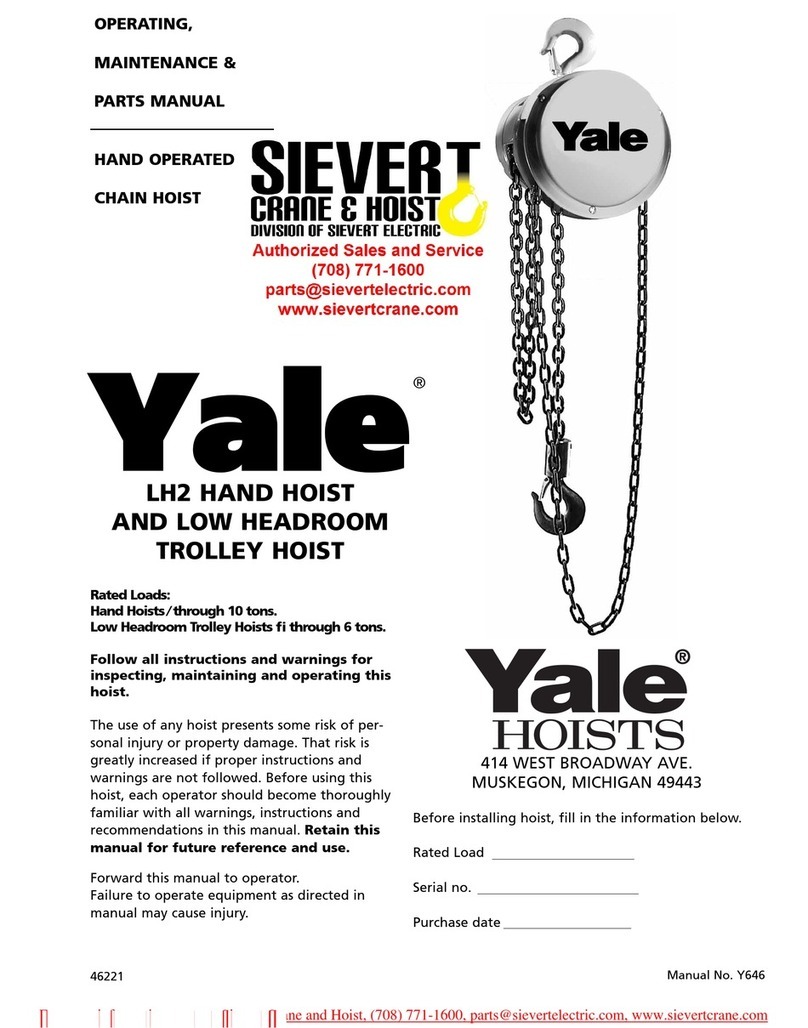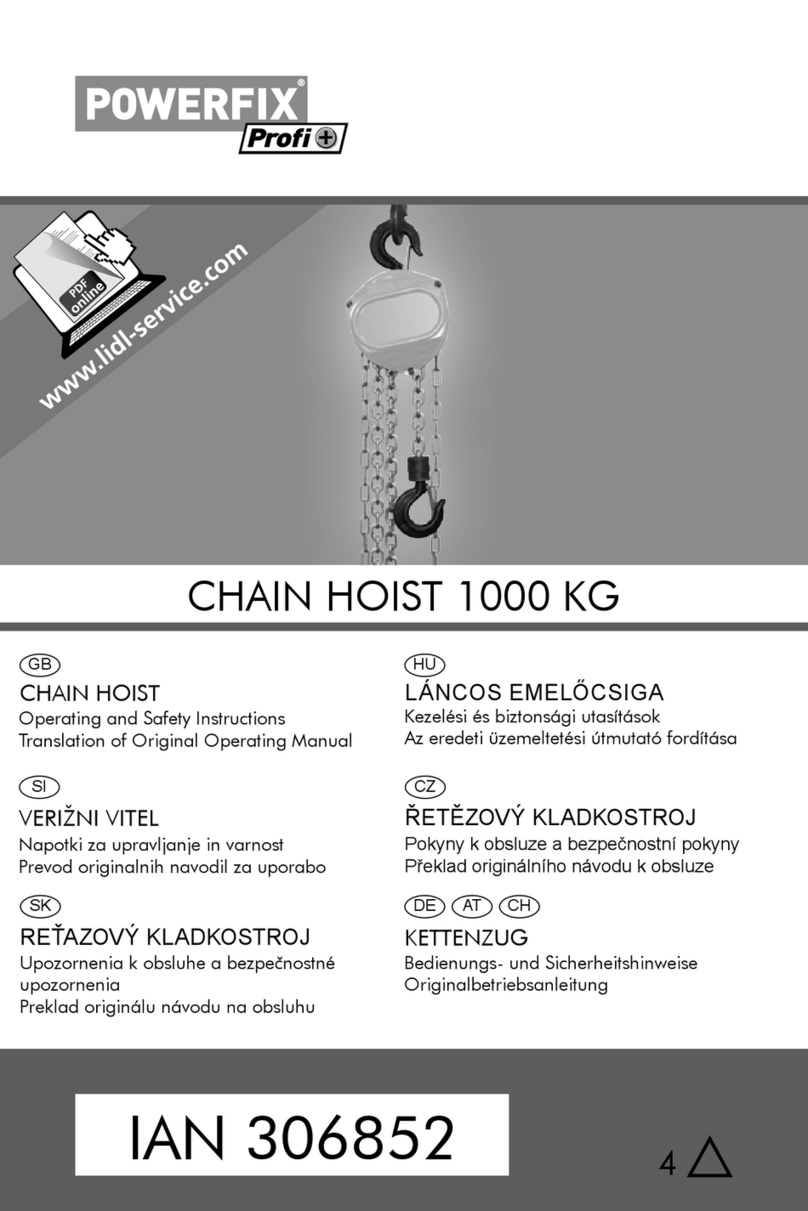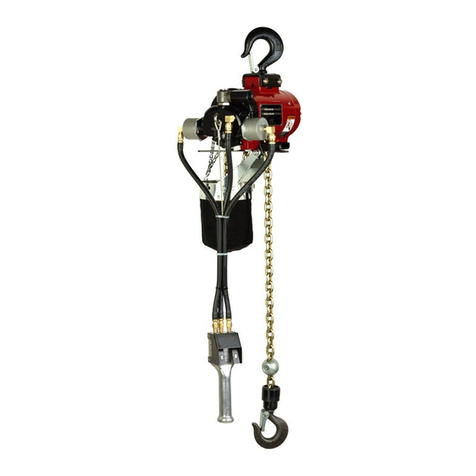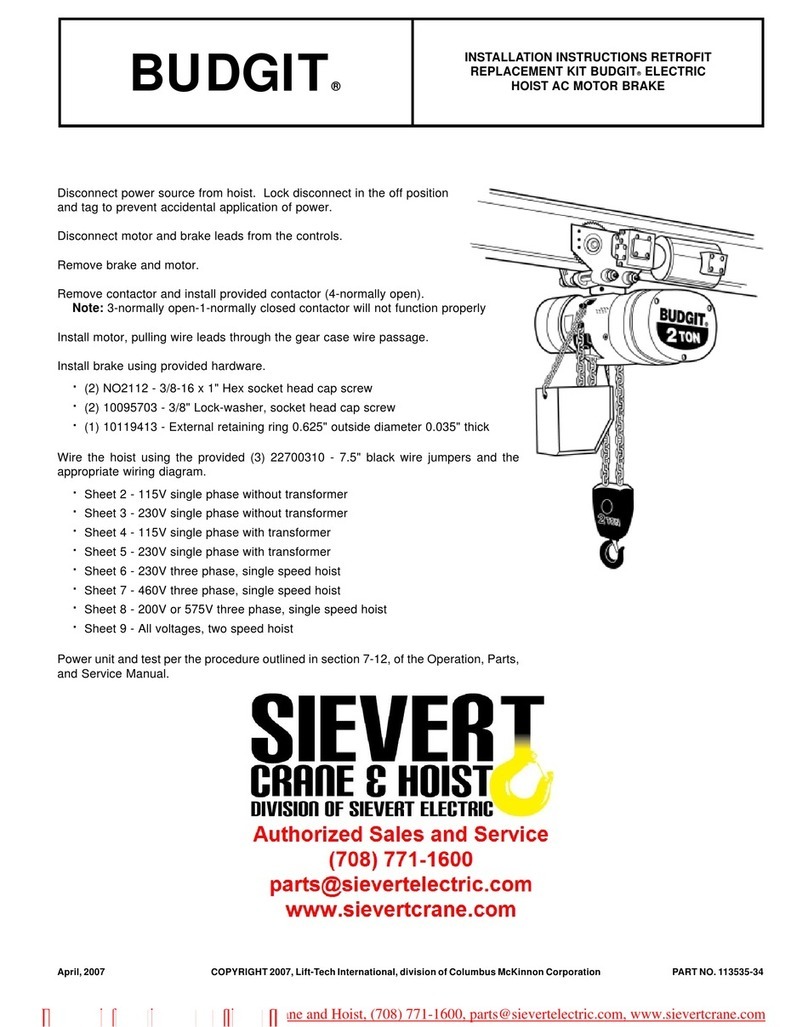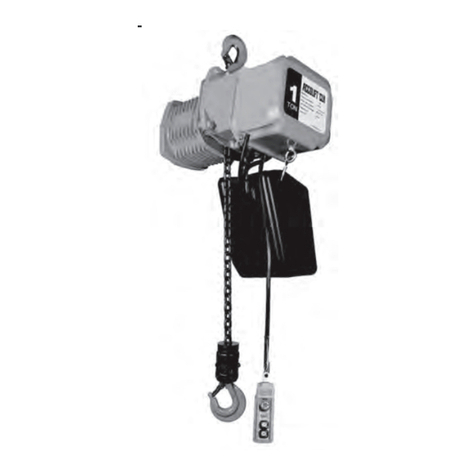
Figure 5 - Hook Inspection
Depress latch to
measure throat
opening
ENGLISh
6
(ENGLISH) P/N: BANMANUAL REV. AD September 2014
INSPECT hOIST
Before each use and at specified intervals
as directed in the inspection section.
1. DO NOT exceed capacity shown on
nameplate.
2. DO NOT use to lift people or loads
over people.
3. DO NOT use unless the hoist’s
frame and chain form a straight line
between hooks.
4. DO NOT use if the frame is in contact
with any object.
5. DO NOT use if the unit is damaged
or malfunctions.
6. DO NOT use extension on lever.
Use hand power only.
7. DO NOT use if chain is twisted,
kinked or damaged.
MAINTENANCE
INSPECTION
To maintain continuous and satisfactory
operation, a regular inspection procedure
must be initiated so that worn or damaged
parts can be replaced before they become
unsafe. The intervals of inspection must be
determined by the individual application
and are based upon the type of service to
which the hoist is subjected. The intervals
indicated as follows are based on normal
service.
The inspections are divided into two
general classifications designated as
“frequent” and “periodic”.
FREQUENT INSPECTIONS
These inspections are usually visual
examinations by the operator. Frequent
inspections are to be performed daily or
before each use and they are to include:
1. Braking mechanism for evidence
of slippage.
2. Operation of the directional lever
for free movement.
3. Load chain for lubricant, wear,
damaged links or foreign material.
4. Hooks for damage, cracks, twists,
latch engagement and latch operation.
PERIODIC INSPECTIONS
These are visual inspections of external
and internal conditions by a designated
person making records to provide the
basis for continuing evaluation of the
condition of the hoist. The frequency of
periodic inspections is based upon usage
as defined in ASME B30.21. Periodic
inspections should include those items
as well as the following:
1. Chain for excessive wear or stretch
(See Figures 6 and 7, page 7).
2. Worn, cracked or distorted parts such
as lower hook block, upper hook block,
upper hook pin, chain guide, bushings,
lever, brake cover, free chaining knob,
directional pawl, friction hub and lever
ratchet.
3. Inspect for wear on the tip of the pawls,
teeth of the ratchet, and pockets of the
liftwheel.
4. Loose or missing bolts, nuts, pins or
rivets.
5. Inspect the brake components for
worn, glazed or contaminated friction
discs and scoring of the friction hub
and ratchet. Replace brake ratchet
assembly if contaminated, glazed
or if thickness is less than 0.256 in.
(6.5 mm) for 0.75 tonne and 1.5 tonne,
and 0.307 in. (7.8 mm) for 3 tonne and
6 tonne.
6. Corroded, stretched or broken pawl
springs, directional lever pawl spring
and lever ratchet spring.
7. Hooks – Visual inspection based upon
ASME B30.10 and ASME B30.21.
8. Nameplate and Warning Labels
for legibility and retention.
9. Chain stop in place and properly
secured.
Any deficiency should be corrected before
the hoist is returned to service. Also, the
external conditions may show the need
for more detailed inspection which, in turn,
may require the use of non-destructive
type testing.
Any parts deemed unserviceable are to be
replaced with new parts before the hoist
is returned to service. It is very important
that the unserviceable parts are destroyed
and properly disposed of to prevent their
possible future use as a repair item.
When the unit is subjected to heavy
usage or dusty, gritty, moist or corrosive
atmospheric conditions, shorter time
periods must be assigned. Inspection
must be made of all parts for unusual wear,
corrosion or damage, in addition to those
specifically mentioned in the schedule.
HOOK INSPECTION
Hooks damaged from chemicals,
deformations or cracks, or that have
a twist from the plane of the unbent hook,
excessive opening or seat wear, must
be replaced (see ASME B30.10). Also,
hooks that are opened to the extent that
the latch does not engage the tip must be
replaced. Any hook that is twisted or has
excessive throat opening indicates abuse
or overloading of the hoist. Other load
sustaining parts should be inspected for
damage.
Check to assure the latch is not damaged
or bent and that it operates properly. It
should have sufficient spring pressure to
keep it tightly against the tip of the hook
and allow it to spring back to the tip when
released. If the latch does not operate
properly, replace the latch.
The chart above should be used
to determine when the hook must
be replaced.
LOAD CHAIN
Chain should feed smoothly into and
away from the hoist. If chain binds, jumps
or is noisy, first clean and lubricate it (See
Page 7). If trouble persists, inspect chain
and mating parts for wear, distortion or
other damage.
Use as directed above. Failure to do so
may cause injury to you or others.
Hoist Capacity
(Tonnes)
Replace Hook
When Opening is
Greater Than:
in. (mm)
3/4 1.25 (19)
1-1/2 1.375 (35)
3 1.72 (44)
6 2.31 (59)
For
more
information
contact:
Sievert
Crane
and
Hoist,
(708)
771-1600,
[email protected],
www.sievertcrane.com

